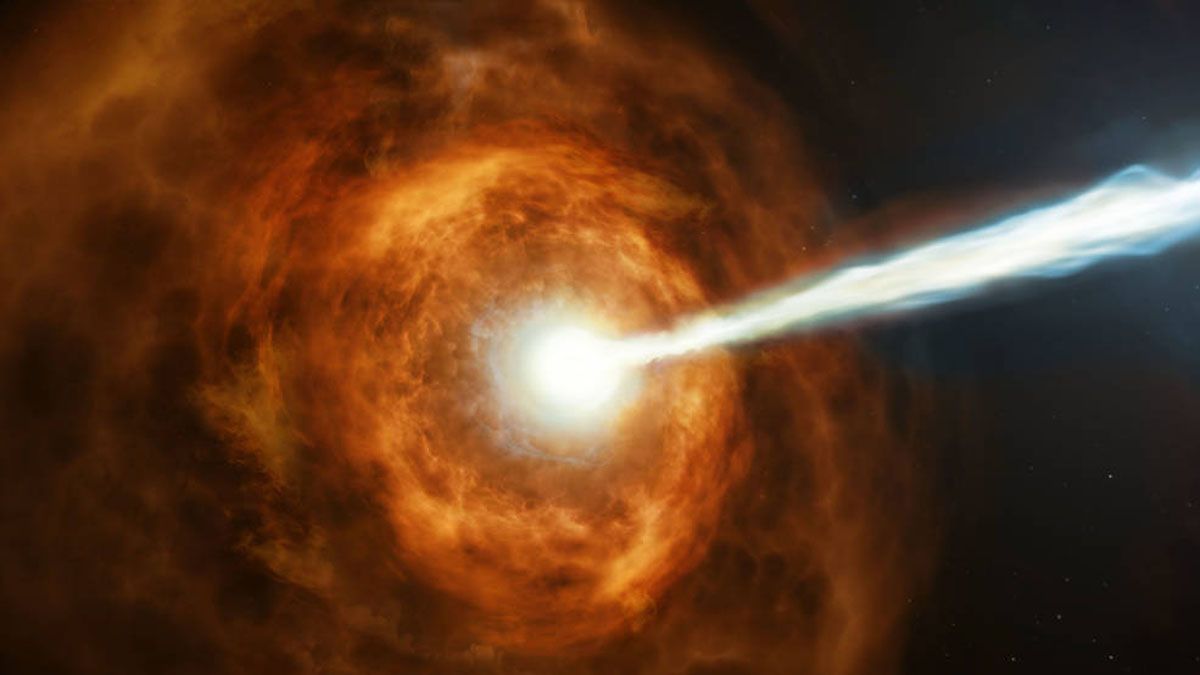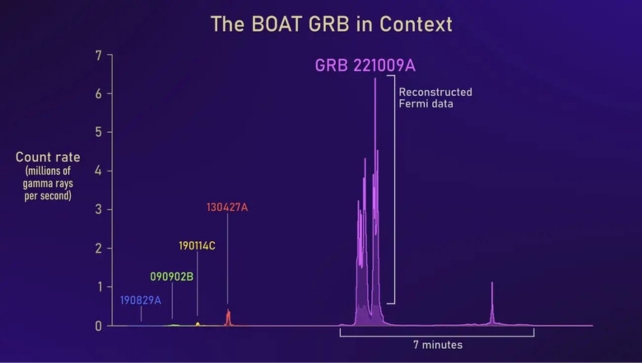A recent gamma-ray burst that occurred in our Solar System was so intense that it temporarily blinded gamma-ray instruments in space, as stated by a N.A.S.A release.
This gamma-ray burst (GRB), which is considered the most powerful type of explosion in the Universe, was 70 times brighter than any other previously recorded event. Scientists have named it “the BOAT,” or “brightest of all time.”

A gamma-ray burst (GRB) occurs when a massive star nears the end of its life and collapses under its own weight to form a black hole. This process generates an explosion called a supernova, and the resulting black hole is born into a massive cloud of residual gas and dust. The black hole then quickly consumes the surrounding matter.
GRBs are considered the most powerful explosions in the Universe and are accompanied by a burst of gamma-rays. These bursts are brief, lasting only a few seconds to several minutes, but they release an enormous amount of energy. GRBs are rare and difficult to detect, but they provide valuable insights into the physics of black holes and the evolution of the Universe.

After the black hole is formed, it emits two powerful jets of high-energy gamma radiation traveling at near the speed of light in opposite directions. This phenomenon, known as a cosmic burp, is still a scientific mystery as to why it occurs.
Despite being brief, lasting only a few seconds, these powerful bursts of gamma radiation are extremely bright, and astronomers have documented around 12,000 gamma-ray bursts. It was one of these jets that struck our Solar System last fall.
The brightest GRB of all time
The gamma-ray burst, named GRB 221009A, was detected on October 9, 2022, and its intensity was so great that it temporarily blinded space instruments, making it difficult to accurately record its initial brightness. Over the past few months, scientists from around the world, including the US, China, and Russia, have collected data from other instruments to measure and re-measure the GRB’s brightness.
Through their analysis, they determined that the burst was 70 times brighter than any other gamma-ray burst event in recorded history. The Hubble Space Telescope’s Wide Field Camera 3 was able to capture the infrared afterglow of the BOAT GRB and its host galaxy, which appeared nearly edge-on as a thin strip of light extending to the burst’s upper right.

The intensity of the gamma radiation emitted by GRB 221009A is significantly greater than any other gamma-ray burst on record. Researchers have estimated that this type of event only occurs once every 10,000 years.
Eric Burns, an assistant professor of physics and astronomy at Louisiana State University, said, “GRB 221009A was likely the brightest burst at X-ray and gamma-ray energies to occur since human civilization began.”
The narrow jets of gamma radiation were directed directly at Earth, making the event appear brighter than others that are not aimed directly at us. Scientists hope that studying this event will help solve the mystery of why black holes emit gamma-ray bursts in the first place. One theory suggests that the jets were powered by a magnetic field that the black hole amplified as it began to spin.
Further observations using the James Webb Space Telescope and the Hubble Space Telescope are planned in the coming months to gain a better understanding of this rare and powerful event.








